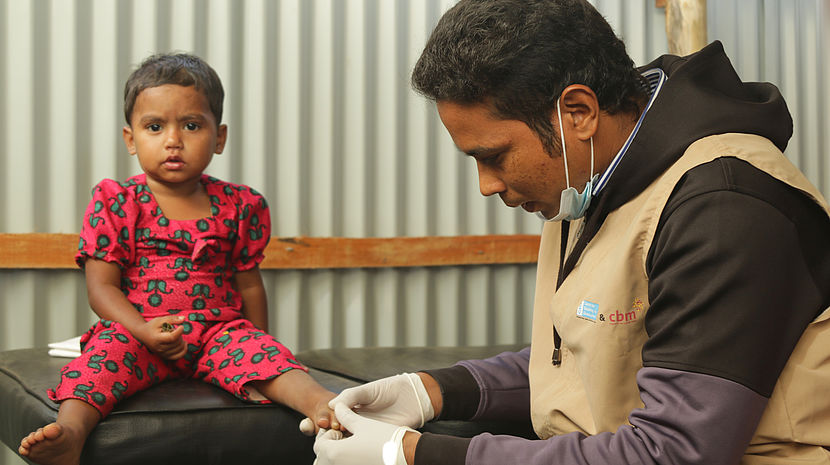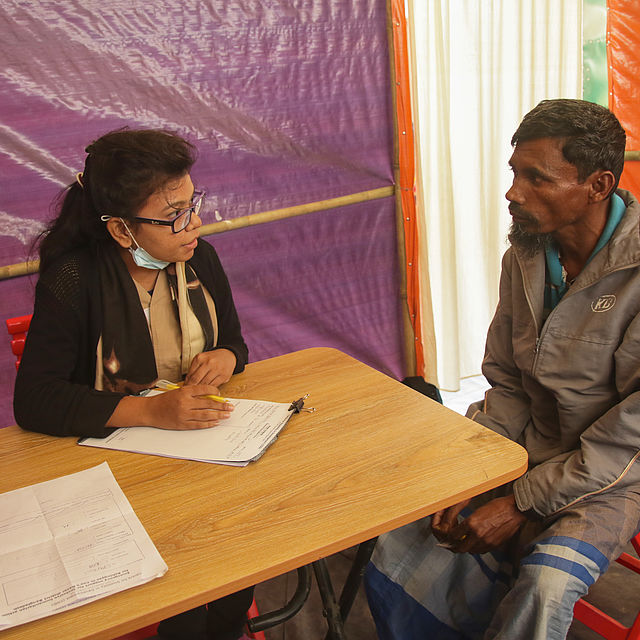Early Rehabilitation in Conflicts and Disasters - Launch of field handbook and e-learning modules

3-year-old Ashika fled from violence in her home country Myanmar and now lives in the Rohingya refugee camps in Cox's Bazaar, Bangladesh. She has clubfoot and is undergoing physiotherapy sessions at the CBM-supported medical centre at Balukhali refugee camp.
© CBM/Patwary
On the International Day of Persons with Disabilities (IDPD), celebrated annually on 3 December, we draw attention to a recently launched handbook on early rehabilitation in conflicts and disasters.
For the last two years, the World Health Organization (WHO) has been working together with CBM and several other organisations in a highly collaborative process to support the development of a field handbook and e-learning modules on "Early Rehabilitation in Conflicts and Disasters".
Why do we need this handbook?
Conflicts and disasters affect societies at a profound level, with consequences often lasting for generations. Early rehabilitation for patients with traumatic injuries is a crucial element of the acute medical response and is a vital step towards long-term recovery strategies.
This comprehensive, evidence-based field handbook is an invaluable resource that will prepare rehabilitation professionals for emergency settings and act as a reference for safe practice of early rehabilitation of major trauma in emergency medical response situations. This is an opportunity to have a major impact on the care that people injured in conflicts and disasters receive, share our expertise in relevant areas, and support healthcare professionals across the world as they work on early rehabilitation in conflicts and disasters.
